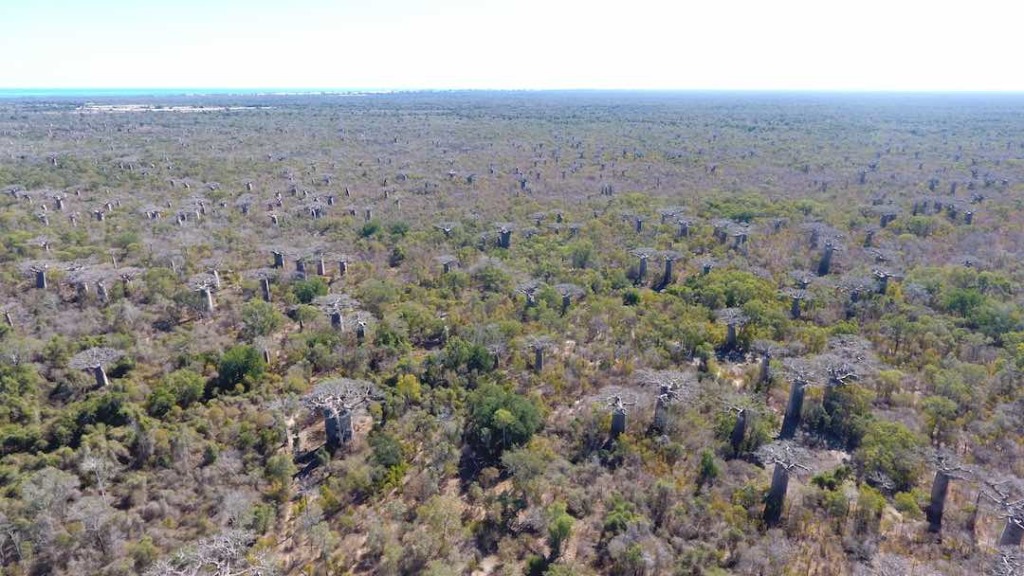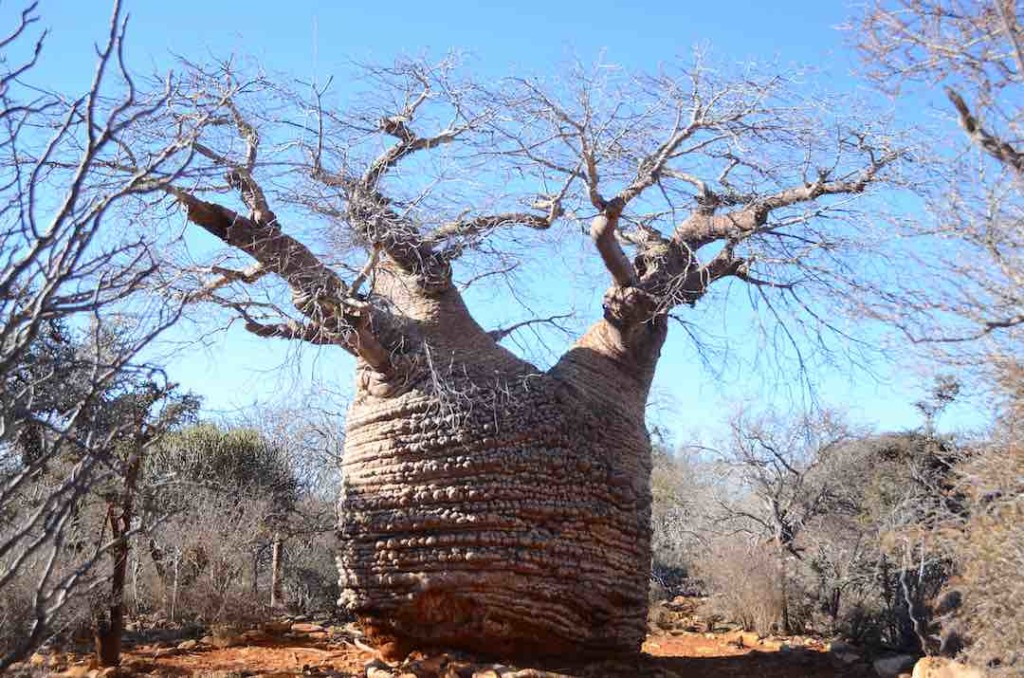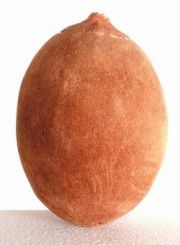Doug Beetle chats with:
Conservation biologist
Seheno Corduant-Andriantsaralaza

Seheno in the south-west of Madagascar. Image: Seheno Corduant-Andriantsaralaza
Seheno Corduant-Andriantsaralaza is a biologist with a strong passion for ecology research about baobabs and conservation and its connection with people. She is the Madagascar manager of the Lemur Conservation Network and also the in-country Director of NGO Lemur Love. Seheno works on biodiversity conservation and development through education, research projects and conservation initiatives. For more information, visit Seheno’s personal website.
Hooray!
It's time to learn about baobabs
Doug Beetle: What makes baobab tree species special? What do you want people to know about them?
Seheno: Baobab trees are among the biggest trees in the world. And the oldest baobab tree is 1600 years old! This means that these trees have lived through many events during their time on the earth, like climate change and severe drought.
In Madagascar, Malagasy people believe that baobab trees are special because they can be so large and dominate forests. They also believe that there is a spirit inside baobab trees. Many people call Madagascar the island of baobabs.

Doug Beetle: How many species of baobabs are there in the world?
Seheno: There are 8 baobab species in the world. Six of them are only found in Madagascar, along the west coast. That’s why we say that Madagascar is the island or home of baobab trees. They add to Madagascar’s incredibly rich biodiversity.


Images courtesy of Seheno Corduant-Andriantsaralaza
Doug Beetle: You studied how baobab trees disperse their seeds. What questions did you ask in your study?
Seheno: When we observed the baobab fruits, we realized that they are much larger than others in the forests. And when we observed the animals in the forests like lemurs, we noticed that they are so small. So, it seems that lemurs cannot break the fruit or pod and eat the pulp inside the fruit.

Baobab fruit.

This is interesting because many fruiting trees need animals to disperse (or spread) their seeds. So, animals eat the fruit pulp and seeds, and then the seeds come out in their poop. Since the animals travel through the forest, when they poop, the seeds get spread wherever the animal goes! Then these seeds can grow, become seedlings, and grow into trees.
So, my questions were:
- Which animals in Madagascar can break the fruit and eat the seeds of baobabs?
- Do the animals that spread the baobab’s seeds still exist?
Doug Beetle: What experiments did you do to answer your questions?
Seheno: We tried to find out what animals are big enough to break the baobab fruits. We discovered that maybe giant lemurs or giant tortoises could break fruits and eat seeds. But, these animals are extinct now.
So, we did experiments with captive giant tortoises in a zoo, and we gave them the baobab fruits. We saw that they easily broke the fruits and ate the seeds. For this experiment, I needed to know if they did or did not destroy the seeds when they broke the pod. To know that, I collected the tortoises’ poop every day and checked if there were intact seeds.

Image courtesy of Seheno Corduant-Andriantsaralaza
Doug Beetle: What answers did you find to the questions that you asked about baobab seed dispersal?
Seheno: After 15 days of poop collection, I finally found almost 80% of the baobab seeds were still intact. I did germination experiments, and those seeds became seedlings quickly. These results mean that baobab trees really need big animals to disperse their seeds.
Doug Beetle: How are the baobabs and their habitat in Madagascar doing? What are the challenges to their survival?
Seheno: Unfortunately, big animal seed-dispersers are all extinct. So, we need to find out how baobabs can survive without them. I am currently doing research to know what happens to the baobabs in forests if there aren’t any animals that can disperse their seeds.

Illustration by Roman Uchytel, Prehistoric Fauna
Baobab habitats are also in danger. They are facing degradation due to wildfires and agriculture (or farming). In Madagascar, people need to find areas to do agriculture to feed their families. So, they cut down trees in forests to clear the land for farming. Also, in the west of Madagascar, there are some big companies that cut down large areas of forests to grow corn and export corn products. This is also a challenge for the baobab’s survival.
Doug Beetle: What can young people who like baobab trees do to help conserve them?
Seheno: To help conserve baobab trees, you can learn more about Madagascar and its biodiversity. And, share what you learn with your friends and family!
In your daily life, try to eat food that is grown locally (near where you live). When you eat food that is grown far away from your home, it is hard to know if that food was produced sustainably. As we have learned, forests in Madagascar are being cut down for corn products that are sold around the world. So, if you eat local food, then you can be sure your food isn’t part of the problem.








